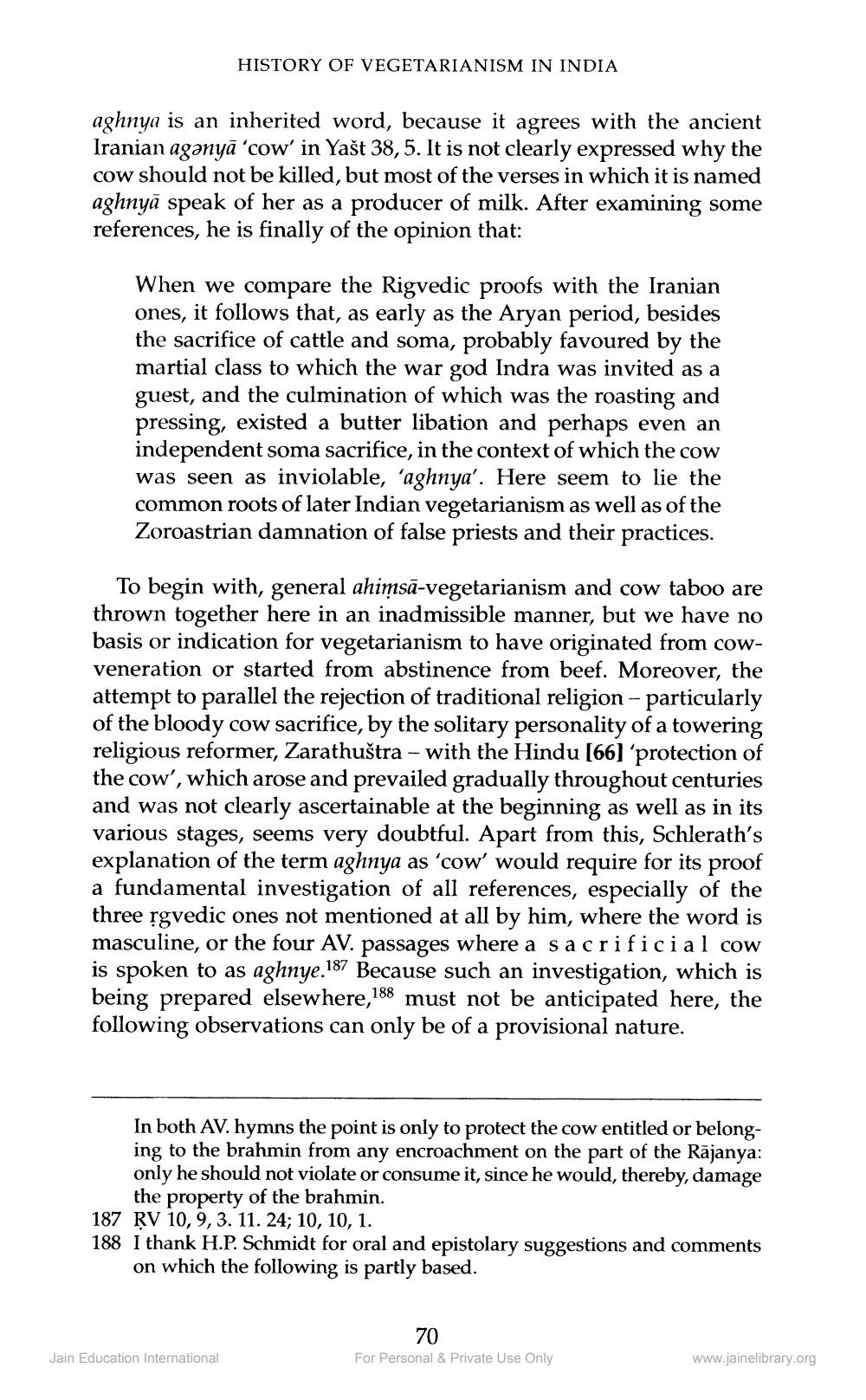________________
HISTORY OF VEGETARIANISM IN INDIA
aghnya is an inherited word, because it agrees with the ancient Iranian agənyā “cow' in Yašt 38,5. It is not clearly expressed why the cow should not be killed, but most of the verses in which it is named aghnyā speak of her as a producer of milk. After examining some references, he is finally of the opinion that:
When we compare the Rigvedic proofs with the Iranian ones, it follows that, as early as the Aryan period, besides the sacrifice of cattle and soma, probably favoured by the martial class to which the war god Indra was invited as a guest, and the culmination of which was the roasting and pressing, existed a butter libation and perhaps even an independent soma sacrifice, in the context of which the cow was seen as inviolable, 'aghnya'. Here seem to lie the common roots of later Indian vegetarianism as well as of the Zoroastrian damnation of false priests and their practices.
To begin with, general ahimsā-vegetarianism and cow taboo are thrown together here in an inadmissible manner, but we have no basis or indication for vegetarianism to have originated from cowveneration or started from abstinence from beef. Moreover, the attempt to parallel the rejection of traditional religion - particularly of the bloody cow sacrifice, by the solitary personality of a towering religious reformer, Zarathustra - with the Hindu [66] 'protection of the cow', which arose and prevailed gradually throughout centuries and was not clearly ascertainable at the beginning as well as in its various stages, seems very doubtful. Apart from this, Schlerath's explanation of the term aghnya as 'cow would rec
proof a fundamental investigation of all references, especially of the three rgvedic ones not mentioned at all by him, where the word is masculine, or the four AV. passages where a sacrificial cow is spoken to as aghnye.187 Because such an investigation, which is being prepared elsewhere,188 must not be anticipated here, the following observations can only be of a provisional nature.
re
La
In both AV. hymns the point is only to protect the cow entitled or belonging to the brahmin from any encroachment on the part of the Rājanya: only he should not violate or consume it, since he would, thereby, damage
the property of the brahmin. 187 RV 10,9,3. 11. 24; 10, 10, 1. 188 I thank H.P. Schmidt for oral and epistolary suggestions and comments
on which the following is partly based.
70 For Personal & Private Use Only
Jain Education International
www.jainelibrary.org




